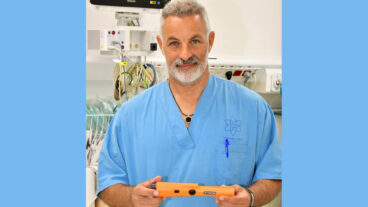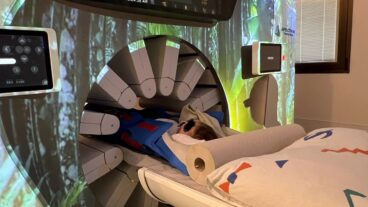A new protein injection developed by Israeli researchers can trigger the regrowth of blood vessels around the heart, offering a potential alternative to risky bypass surgery.
Israeli researchers have developed a protein-based injection that can spark the regrowth of tiny blood vessels, offering hope of an alternative treatment to the hundreds of thousands of people undergoing open-heart surgery every year.
In heart disease, blood vessels are either clogged or die off, starving the heart of oxygen and leaving it highly vulnerable to a cardiac attack. Open-heart surgery, though it carries many risks, is now a frequent treatment for heart disease.
At present, in the US alone, some 700,000 people undergo open-heart surgery annually according to the American Heart Association.
In their groundbreaking research, Dr. Britta Hardy and her partner Prof. Alexander Battler of Tel Aviv University developed a protein that can be injected straight into the muscles of the body, triggering the regrowth of tiny blood vessels in just a few weeks.
“The biotechnology behind our human-based protein therapy is very complicated, but the goal is simple and the solution is straightforward,” says Hardy. “We intend to inject our drug locally to heal any oxygen-starved tissue.”
New blood vessels grow in a few weeks
Hardy first began exploring this field in the hope of preventing leg amputations. She believed that proteins from the human body could be used to trigger the growth of new blood vessels and she discovered through experiments on diabetic mice, in which she saved their legs that were wasting away, that her theory was correct.
In tests in animal models, researchers injected the drug into the animals’ legs. So far, says Hardy, they have seen no side effects or inflammation in the wake of the treatment. “The growth of new blood vessels happens within a few weeks, showing improved blood circulation,” she says.
Research on the procedure was recently published in the international journal Biochemical Pharmacology.
Hardy, of the university’s Sackler School of Medicine, says the protein solution could also be added as a coating to a stent.
At present, stent implantation brings with it a high risk for blood clots, which means patients must take blood thinners. “We could coat a stent with our peptide, attracting endothelial stem cells to form a film on the surface of the stent,” Hardy explains. “These endothelial cells on the stent would eliminate the need for taking the blood thinners that prevent blood clots from forming.”
From diabetes to heart disease
Hardy studied a library of peptides and tested them in the laboratory, confirming her theories. She then took some of the isolated and synthesized peptides and tested them in diabetic mice whose legs were in the process of atrophying.
Although diabetes is known to decrease blood circulation, Hardy discovered that her therapy reversed the decrease. “Within a short time we saw the formation of capillaries and tiny blood vessels. After three weeks, they had grown and merged together with the rest of the circulatory system,” she says.
In mice with limited blood circulation, she was able to completely restore blood vessels and save their legs. It was then a short step to studying the applicability of the research to cardiac patients.
If investment goals are met, Hardy anticipates toxicity studies and Phase I trials could be complete within two years. She is confident that a new therapy could become commercially available relatively quickly as clinical results are almost immediate.
“It’s pretty obvious if there is regrowth or not,” she explains. “Our technology promises to regrow blood vessels like a net, and a heart that grows more blood vessels becomes stronger. It’s now imaginable that, in the distant future, peptide injections may be able to replace bypass surgeries.”












